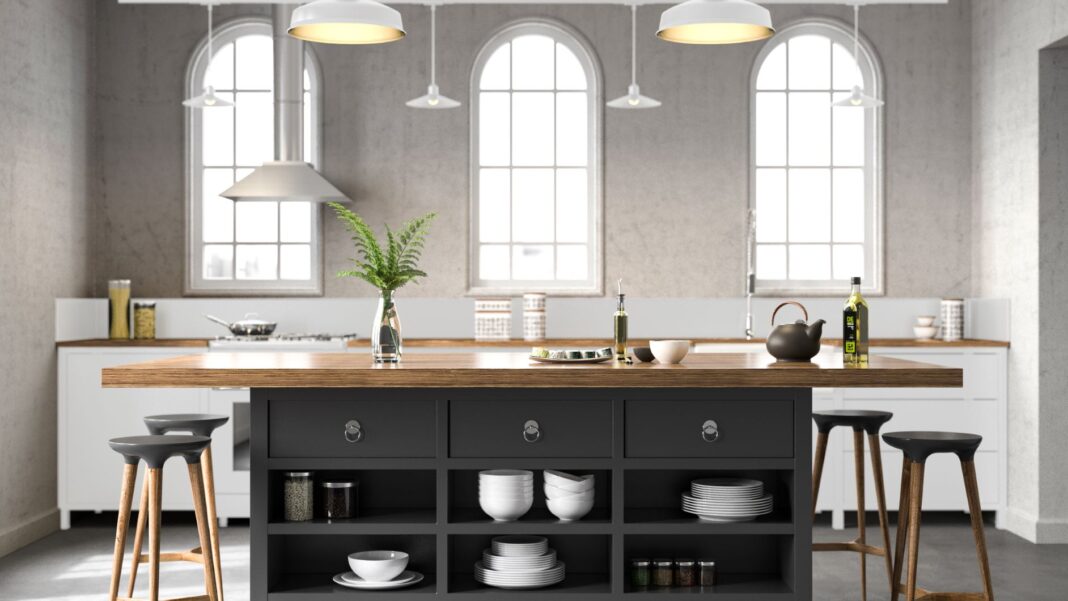It’s no secret Australians have fallen in love with kitchen island benches. The long-standing here-to-stay trend lends itself to a casual dining and central entertaining hub suited to our relaxed Aussie lifestyle.
Caesarstone shares their top tips for finding the ideal island.
Consider the profile
The options are endless! Choose from slim, sleek shark nose, refined pencil edge, bold graphic apron, or a sophisticated shadow line edge. Then there’s the bullnose, half bullnose, splayed, arris and the lamb’s tongue! Enjoy the exploration.
Make it seamless
The secret is in the laminated or mitred join – a means of joining two pieces of Caesarstone permanently and virtually seamlessly.
The laminated edge, where two pieces are stacked on top of each other, is the strongest join and creates a bold, robust look.
Storage
While aesthetically beautiful, islands also offer great functionality.
Modern kitchen island designs create opportunities to increase storage capacity with innovative built-in storage solutions that ensure everything is neatly tucked away.
Find your style
Do you lean toward a mid-century modern vibe but are intrigued by the unpolished, urban feel of the industrial aesthetic?
With so many options, it’s easy to be overwhelmed.
Get out of your head and take Caesarstone’s style quiz to help you define your style: caesarstoneus.com/about-us/information-inspiration/design-to-inspire/quiz-what-s-your-caesarstone-style/
Light your way
You’ve got your style now it’s time for the right light.
Beacon Lighting designer Caetlin Cresswell steps you through the selection process.
Whether it is cooking a meal with family or casually sitting at your island with friends, lighting and functionality is a priority as it enhances the aesthetic and decorative elements of kitchens.
Measurements are king
Note the total size of the area, ceiling height and countertop dimensions.
Consider balance and scale, particularly when it comes to feature lighting.
How will you use the space?
The central hub of the home, the kitchen island bench is utilised for many tasks, from cooking or entertaining to office activities.
Categorise these activities into general lighting, task lighting or accent lighting. These different types of lighting are layered within the space.
A design tip is to consider the location of your task areas, such as the sink and cooktop, and lay out your downlights accordingly.
What do you need to consider when selecting lights for a kitchen island?
Ideally, match the lighting with the home’s décor style, be it modern, coastal, traditional or industrial.
Consider what style or colour the cabinetry and appliances are. If you have white cabinetry and want your pendants to stand out, perhaps choose a solid black fitting that will contrast.
You may be limited to a smaller style pendant light if your ceilings are low. A general rule to follow is to consider a suspension length of at least double the pendant’s shade height.
Are there design tips or specific products that you would recommend for a kitchen island?
To think outside the box, consider the layout of the island. There may be a sink, or seating area with bar stools to one end, where a single oversized pendant or a cluster of smaller pendants can be placed to one side of the bench. This allows you to mix shapes, sizes, colour and style of pendants to create your own feature.
Top three tips
1. Lighting design is all about two things: practicality and aesthetic. Consider the functionality of your lighting choice as much as the style and look.
2. When unsure about the scale of pendants in your kitchen, make a paper/cardboard cut-out to true size and play around with different heights and configurations. Some lighting stores will also allow you to take the pendant home to ensure it is a good match.
3. Consider all light sources in your kitchen and how they work holistically to provide sufficient light for the space. For example, you may already have sufficient general lighting in the area which can then allow you to select a pendant style with a covered shade for your island. It is about creating balance between the general, task and ambient layers of lighting in the space.
For more like this:



